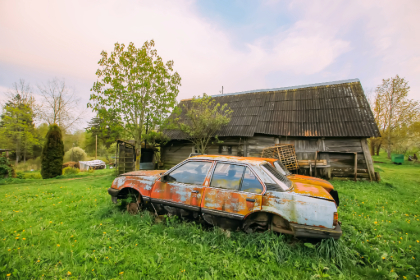INDEPENDENT DEALER
Greenville, NC | (252) 917-1677
OUR BLOG
If you’re a vehicle owner, you may or may not have heard about paint correction. However, if you care at all about your vehicle’s lifespan, resale value, and performance, you should keep it in mind. Learn more about the topic in this post by Cherry Synthetics in Greenville, NC.

Your car’s paint takes a beating every day—road grime, harsh weather, UV rays, and even improper washing techniques can leave behind swirl marks, scratches, and oxidation. Over time, this can make even a new vehicle look dull and neglected. That’s where paint correction comes in.
Paint correction is the process of removing imperfections from a car’s paint to restore its original shine and clarity. Unlike a simple wax or polish, which only enhances the surface temporarily, paint correction actually eliminates defects by carefully leveling the clear coat. This technique can significantly improve your car’s appearance and even boost its resale value.
Call Cherry Synthetics in Greenville, NC at (252) 917-1677 or visit AMSOIL’s online store to help you keep your vehicle in pristine condition inside and out.
What Causes Paint Imperfections?
Before diving into the correction process, it's important to understand what causes paint damage in the first place:
- Swirl Marks and Scratches – Improper washing and drying with rough sponges or dirty towels often leave fine scratches that create swirl marks.
- Oxidation – Prolonged exposure to sunlight causes the paint to fade and lose its shine.
- Water Spots and Etching – Hard water from rain or sprinklers can leave behind mineral deposits that stain the clear coat.
- Bird Droppings and Bug Splatter – These contain acidic compounds that can eat into the paint if not removed quickly.
- Road Debris and Contaminants – Tar, dirt, and industrial fallout can stick to the surface, leading to a rough, dull appearance.
The Paint Correction Process
Paint correction isn’t just about applying some polish—it’s a multi-step process that requires precision and patience. Here’s a general breakdown:
Step 1: Thorough Washing and Decontamination
Before correcting the paint, the car must be properly washed and decontaminated. This involves:
- Using a pH-balanced car shampoo to remove dirt and grease.
- Applying a clay bar treatment to remove embedded contaminants.
Skipping this step can result in further scratches during the correction process.
Step 2: Paint Inspection
Once clean, the paint is examined under specialized lighting to identify swirl marks, scratches, and other imperfections. This helps determine whether the car needs a single-stage or multi-stage correction.
Step 3: Compounding and Polishing
- Compounding – A cutting compound is applied using a dual-action or rotary polisher to remove deeper scratches and oxidation.
- Polishing – A finer polish is used to refine the paint, bringing out a smooth, glossy finish.
Some vehicles may require multiple rounds of compounding and polishing, depending on the severity of the damage.
Step 4: Sealing and Protection
After the paint is corrected, it needs protection to prevent future damage. This can include:
- Wax or Paint Sealant – A temporary protective layer that adds shine and repels contaminants.
- Ceramic Coating – A long-term solution that forms a hard, protective layer over the paint.
- Paint Protection Film (PPF) – A physical barrier that defends against scratches and chips.
You can use AMSOIL’s car care & detailing line to help you keep a shiny and beautiful vehicle for longer!
Benefits of Paint Correction
Investing in paint correction isn’t just about aesthetics—it offers several practical benefits as well:
- Restores Original Shine – Removes dullness and imperfections, making your car look brand new.
- Increases Resale Value – A well-maintained car with flawless paint can command a higher price.
- Prepares for Coatings and Protection – Corrected paint allows wax, sealants, and ceramic coatings to adhere better.
- Saves Money on Repainting – Instead of an expensive new paint job, correction can restore your car’s appearance for a fraction of the cost.
Is Paint Correction Worth It?
If you take pride in your vehicle’s appearance or want to maintain its value, paint correction is a worthwhile investment. While the process requires time and expertise, the results speak for themselves. Whether you’re dealing with minor swirls or severe oxidation, paint correction can bring back that showroom shine and keep your car looking its best for years to come.
If you're serious about your car’s finish, consider getting paint correction done by a professional—or, if you're confident in your skills, try a DIY approach with the right tools and techniques. Either way, your car will thank you.